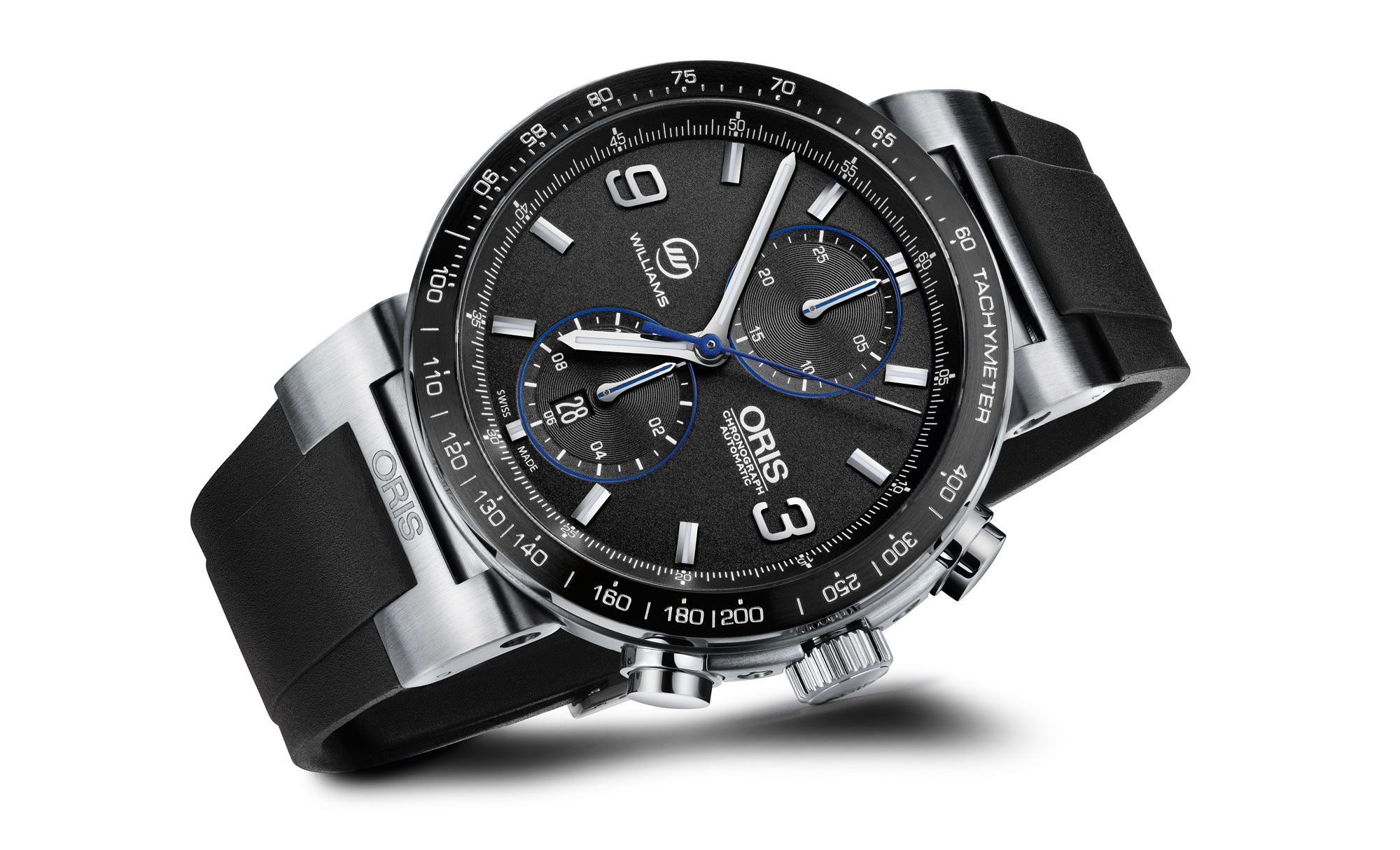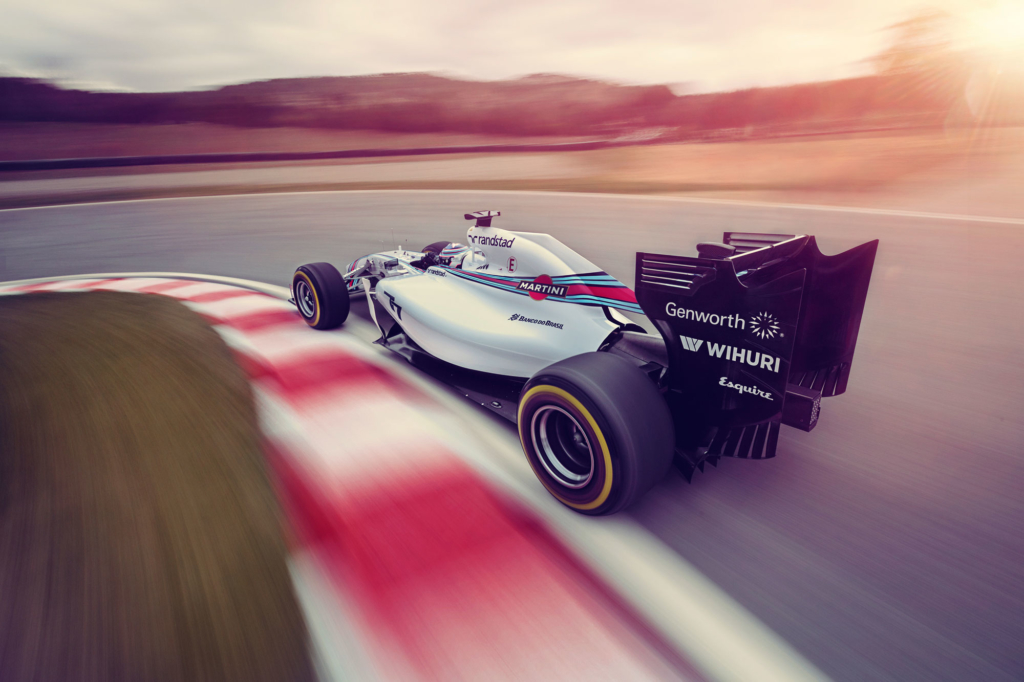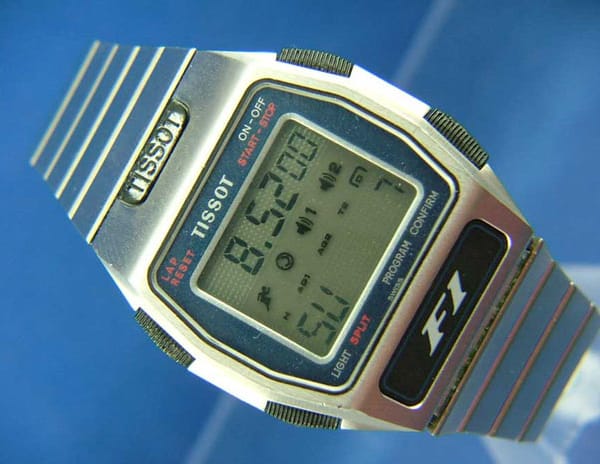It’s strange how sponsorship pairings just click sometimes. Intentional or no, every once in a while, a team and their sponsor will resemble each other beyond the superficialities of brand partnership, and the resulting synergy can produce some truly great successes. A great example of this in the watchmaking world is the 11-year partnership between Oris and Williams Grand Prix Engineering. Both companies, while not necessarily the flashiest or most well-known in their respective sectors, have a reputation for quietly producing some of the most capable, technically advanced machinery in their fields.
The reasons for this between the two varies, however. In the case of Oris, while the company produces cutting-edge and innovative mechanical pieces such as the Big Crown ProPilot Altimeter, the first-ever wristwatch with a mechanical altimeter (find out more on that in Mark McArthur Christie’s excellent write- up here), the brand has simply never captured the greater public’s interest in the same way that the larger Swiss watchmakers have.
Williams, however, is a different story. While modern fans (up until this season) have had to watch the weakest decade in the team’s history, those with longer memories will know the truth. This team, which hasn’t captured either the driver’s or the constructor’s title in 17 years, is the second-most successful overall across the sport’s 55-year history, surpassed only by Scuderia Ferrari. Williams has racked up nine constructor’s championships (1980, 1981, 1986, 1987, 1992, 1993, 1994, 1996, and 1997), and seven world driver’s championships (Alan Jones in 1980, Keke Rosberg in 1982, Nelson Piquet in 1987, Nigel Mansell in 1992, Alain Prost in 1993, Damon Hill in 1996, and Jacques Villeneuve in 1997) since its inception in 1978.
Since then, Williams has had a reputation for technical innovation in their cars, from 1980’s FW07 which perfected the ground effect concept pioneered in the Lotus 78, to the brutally powerful and aerodynamically clean FW11 of 1986, to a car that more than two decades later is widely regarded as the most technologically advanced racing car of all time- the 1992 FW14B. Williams’ 1992 entry into the Formula One World Championship was and still is a technological marvel, with a laundry list of innovations- the semi-automatic gearbox, traction control, anti-lock brakes, and perhaps the most advanced technology ever fitted to a Formula 1 car- the active suspension. Essentially a computer-controlled hydraulic system connected to the car’s suspension, the active suspension system preloaded the car for each corner of a racetrack, allowing the car to stay far more level than otherwise, and vastly improving aerodynamic efficiency.
In the hands of Nigel Mansell and Riccardo Patrese, the car won 10 of the 16 rounds that year, and Mansell glided to an easy driver’s championship with 9 grand prix victories. The car was so dominant, in fact, that almost all of its technologies, with the exception of the semi-automatic gearbox, were outlawed by 1994, ostensibly in the interest of “promoting driver ability”. The team remained a major force through the 90’s, but by the mid-2000s had hit a slump from which they still have not fully recovered. 2014, however, has brought new hope to the Grove, UK-based squad, in the form of new Mercedes power, arguably their strongest driver lineup in years with Felipe Massa and Valtteri Bottas, and a new title sponsor with a legendary history in motorsports- Martini and Rossi. So far this season, Williams Martini Racing has shown itself to have perhaps the second fastest car on the grid, and an impressive midseason string of podiums by young Finnish driver Valtteri Bottas have already made this Williams’ most successful season in many years.
Accompanying this Williams resurgence are a strong lineup of team-branded watches from Oris. The attractive black TT1 Williams F1 Team Day Date is a solid automatic 3-hander with an interesting lugless case design, and the subtle blue accents bring vibrance to the black-on-black-on-black piece. At 43mm, it is slightly on the large side, but as it is lugless, it wears far smaller than it is. The real gem of the collection, however, is the WilliamsF1 Team Limited Edition Chronograph, limited to 600 pieces to celebrate the team’s 600th Grand Prix.
A 12-hour automatic chrono with dials at 12 and 6, and a surprisingly well-balanced dial, this watch shares the blue accent color scheme with the TT1 Day Date, but in my opinion wears it far better. In addition, the lugs are free-swinging, similar to the design of the Laco Atacama (reviewed here), adding versatility to the 44mm size, and blend into a very high-quality rubber deployant strap. The WilliamsF1 Team Limited Edition generally retails for around $2200, and the TT1 Williams F1 Team Day Date goes for around $1300.









 Featured Videos
Featured Videos













